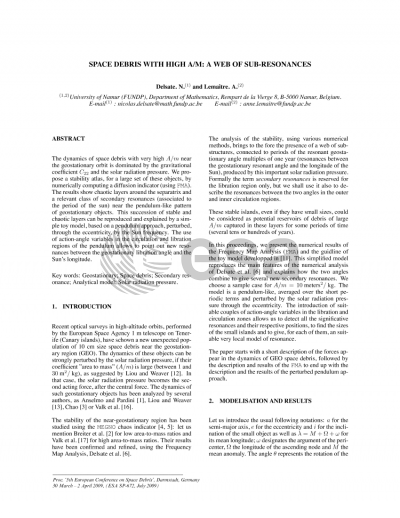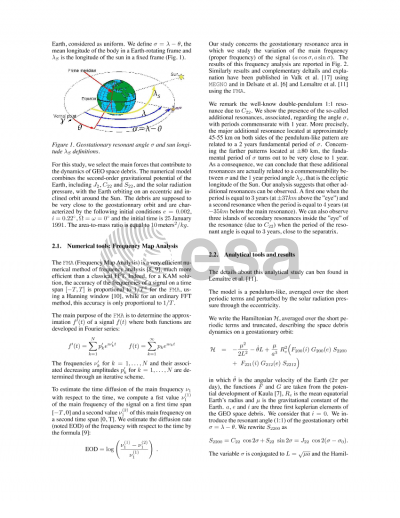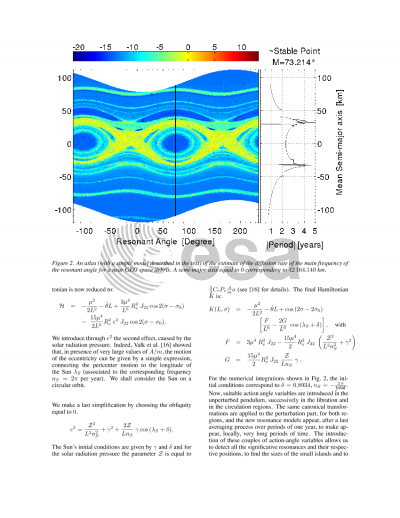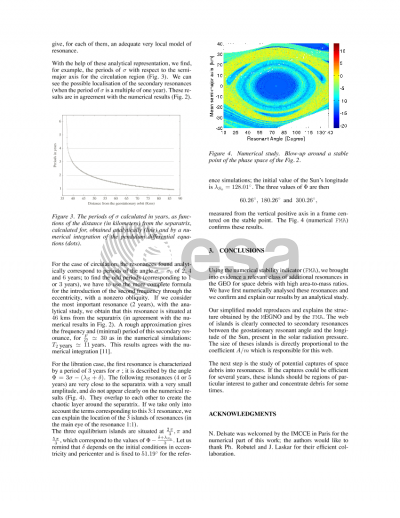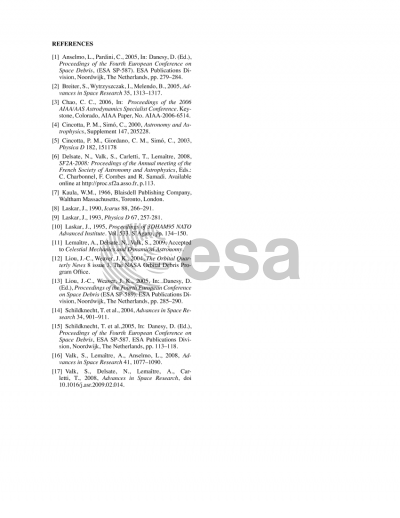Document details

Abstract
The dynamics of space debris with very high A/m near the geostationary orbit is dominated by the gravitational coefficient C22 and the solar radiation pressure. We propose a stability atlas, for a large set of these objects, by numerically computing a diffusion indicator (using FMA). The results show chaotic layers around the separatrix and a relevant class of secondary resonances (associated to the period of the sun) near the pendulum-like pattern of geostationary objects. This succession of stable and chaotic layers can be reproduced and explained by a simple toy model, based on a pendulum approach, perturbed, through the eccentricity, by the Sun frequency. The use of action-angle variables in the circulation and libration regions of the pendulum allows to point out new resonances between the geostationary libration angle and the Sun's longitude.
Preview
